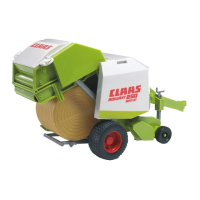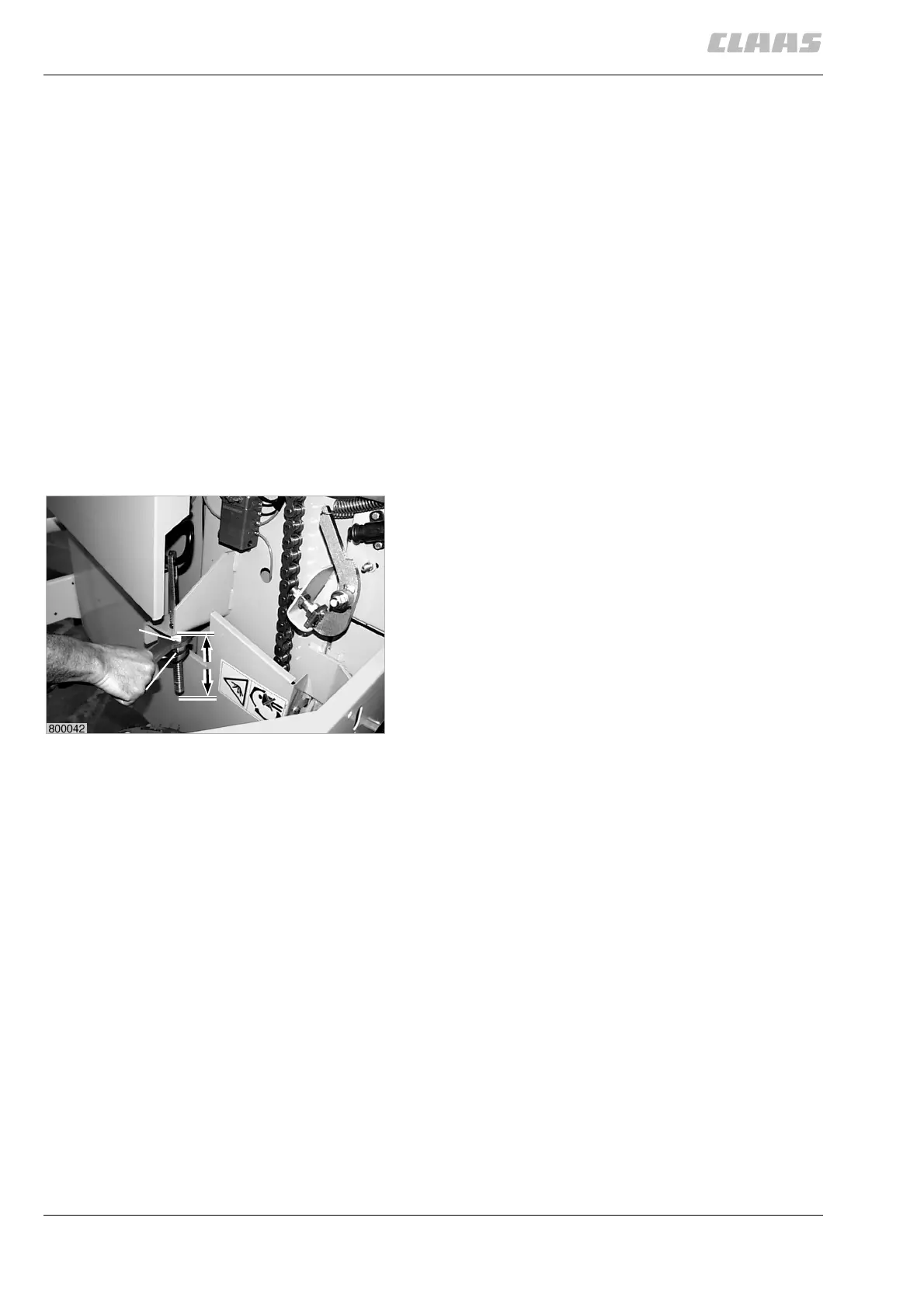8.1.10 BA ROLLANT 240 - 250 - 254 - 255 - 000 299 119 5
Setting up the baler
Recommendations:
Reduce the baling pressure in the following situations:
– When the straw is dry
– For hay that still requires drying at its core
– When the machine is used for the first time, until
the coat of paint has disappeared
– Damp silage
– If the bales are too heavy
– If the cam disc coupling or the shearing pin of the
propeller shaft is frequently activated.
Increase the baling pressure in the following situations:
– The bales are too soft or too light
– Dry silage
– Dry hay.
Adjusting the baling pressure with a pivoting
segment
The ROLLANT 250/254/255 RC is equipped with a
pivoting segment which also controls the baling
pressure. Apart from using the hydraulic baling
pressure adjustment, pressure can be increased or
decreased by adjusting the springs of the pivoting
segment on both sides of the machine.
The baler leaves the factory with a normal operation
setting. This means that the springs are tightened,
which will cause a high bale density.
For crops which need additional drying in the center of
the bale (e.g. hay), or which are very dry or brittle, it is
a good idea to reduce the spring tension.
Spring tension adjustment
Loosen counter nuts (K) on both sides of the baler
using the supplied open end spanner and turn
adjustment nut (M) back to increase measurement (L)
to maximum 140 mm (5.5 inch).
After the adjustment, tighten the lock nuts (K).
L = 75 mm (2.9 inch) for “normal bales” (normal
position)
L = 140 mm (5.5 inch) for “hard bales”
(Fig. 22)
K
M
L
22

